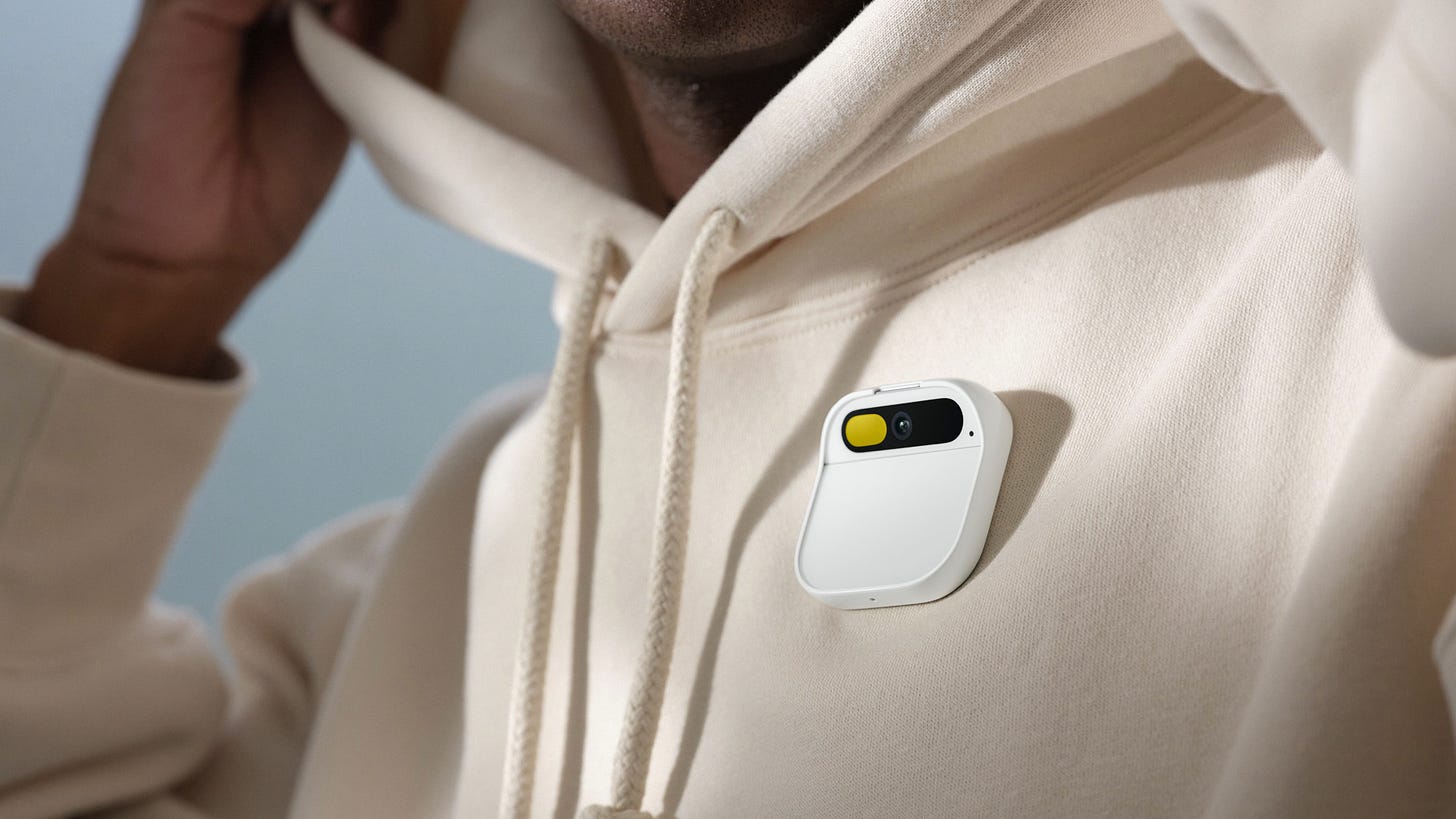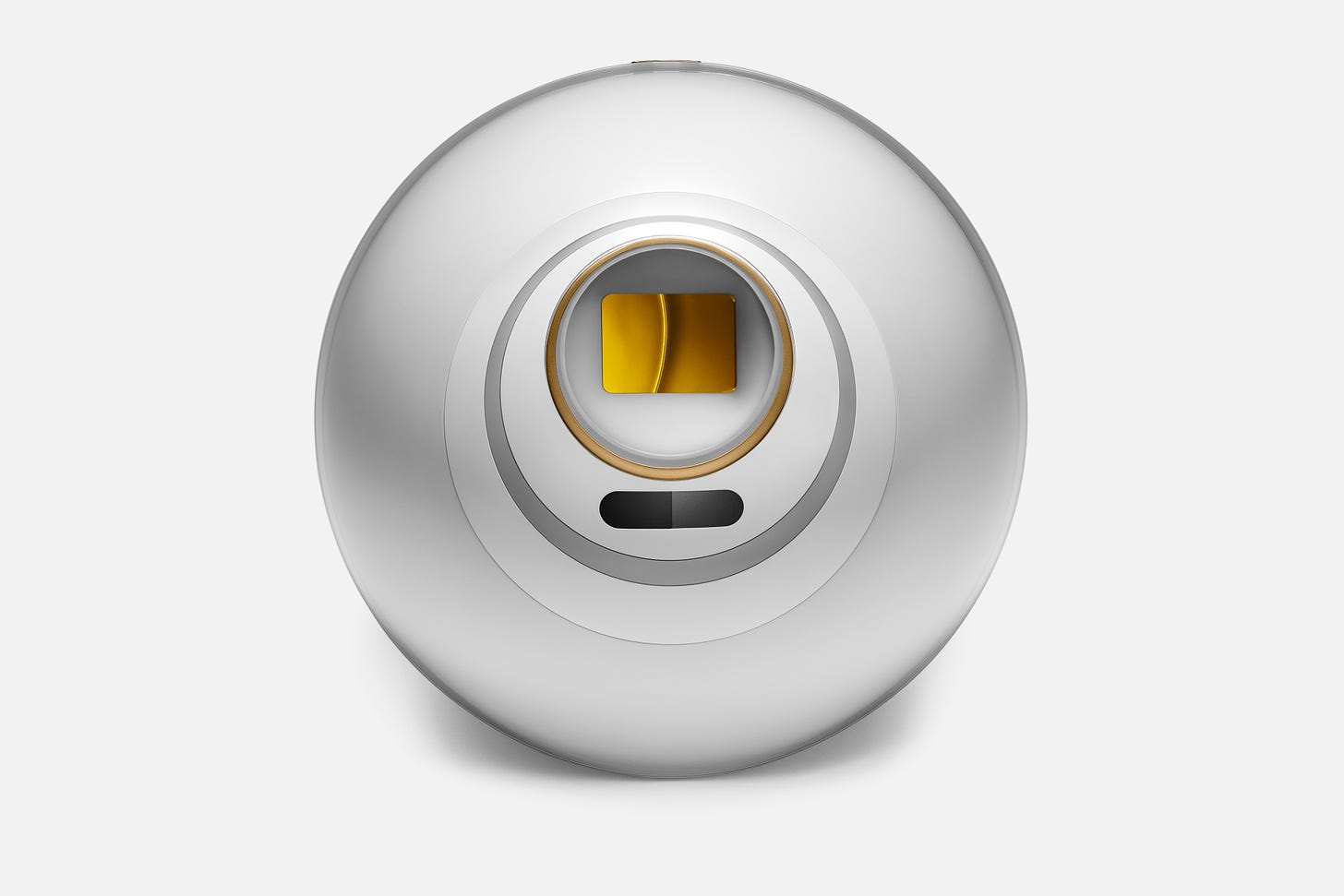The Year AI Gets a Better Body
Sam Altman and Jony Ive are working on a new AI hardware device. The search for innovative form factors for the technology may be one of the most important stories of 2024.
Brought to you by Intercom
At Intercom, we believe that customer service is in need of radical change. We also believe that we are that change.
Intercom is a complete, AI and human customer service platform—and the only platform to combine a help desk, AI chatbot, and proactive support tools.
Our platform also comes equipped with a fully featured inbox, ticketing, a help center, and a messenger, making it not only complete—but also the most powerful support platform. On the planet.
We've got every single tool you need, all in one place, enhanced with AI. So you can give every single customer the fastest, most personalized experience imaginable.
See what we’re up to at intercom.com
The Year AI Gets a Better Body
The AI revolution has gripped the tech sector for the past 18 months. Modern language models and their applications have upended industries, sparked innovation, spawned decent works of art, and raised questions about the nature of our species. This year will mark a new chapter in this narrative: 2024 is the year consumer AI begins to try out new bodies.
All of the miracles AI has performed in recent memory have been made from constrained hardware: the black rectangles of our laptops, phones, and tablets. All were designed before true synthetic intelligence and devised with other uses in mind. AI writes middling poetry, paints operatic canvases, crafts workable code, and answers our questions from little bricks of varying portability.
If an extraterrestrial landed on Earth, they would find this set of affairs strange. Here, you have scalable, instantly available intellects capable of crushing LSAT examinations, besting Magnus Carlsen on the black-and-white, and teaching a lightly-hallucinated history of the Roman Empire, and you keep it where? It’s as if each of us has been assigned a personal genius, but we choose to consult them through a letterbox.
There is a good reason for this state of affairs. It takes time for the world to catch up to this kind of breakthrough, and we have organized much of our society around certain habits and hardware. We cannot remake our tools overnight.
But we are beginning to see early experiments that break new ground. Humane, founded by two former Apple operators, has seemingly created the most original product to date. The company’s first product is the “AI Pin”: a square computing badge with a small camera and a projector. It is navigated via voice and gesture commands and leverages modern AI models, having collaborated with OpenAI and Microsoft. Humane’s demo shows consumers using AI to write texts, summarize incoming emails, conduct live language translations, generate new playlists, and track the nutritional value of different foods against personal goals.
Humane’s grandiose marketing and $230 million in venture funding have contributed to considerable public skepticism. What makes a startup with 0 units shipped worth $850 million? Why would I look at a hazy, turquoise projection instead of a smartphone screen? What am I going to use this for?
From a calculated perspective, such skepticism is reasonable. Most startups fail, and those that try to invent a new computing category are particularly likely to end up on the scrap heap. But there’s a great deal that’s intriguing about Humane’s effort. The company is directly attempting to make a new body for AI and has built it for that purpose. It seems to understand that its Pin is inferior to existing hardware on many dimensions (you will not be using it to browse TikTok or read your favorite websites) but that it could be much better at one critical function: leveraging intelligence. If it can make a strong first impression and retain its early users, it has a chance to pioneer a new category.
Rewind’s AI “Pendant” is another original attempt. The makers of a popular AI productivity application that automatically records browsing activity to help you recall vital information have plunged into hardware manufacturing. The Rewind Pendant records what you say and hear in the real world – and can subsequently answer questions about it. If you want to recall the name of the rapidly growing startup your friend told you about or relive a meaningful conversation with a loved one, the Pendant will remind you. Privacy concerns aside (quite an aside), this seems like a low-effort ask of a consumer (put something around your neck) with a potentially significant pay-off (remember priceless moments). Consumer adoption is rarely so coldly pragmatic, but it’s a decent start.
From a form factor perspective, Meta’s smart glasses are a safer effort. After an unconvincing launch in 2021, the product – a collaboration with Ray-Ban – has picked up momentum. Its latest version, released earlier this year, received positive reviews, with The Verge hailing it as a “turning point.” Meta seems set to boost the product’s AI capabilities in the year ahead. Not long from now, users will be able to ask Meta’s AI to answer questions about their immediate environment. CEO Mark Zuckerberg flaunted the product’s ability to recognize a striped shirt and advise him on suitable trousers to pair it with.
Although a radical new hardware device, Apple’s Vision Pro doesn’t seem to have been engineered with AI top of mind. Nevertheless, the AR/VR headset’s release in “early 2024” could prove useful in AI’s search for a new body. The Vision Pro reportedly uses no controller – only eye tracking, voice, and gesture. If these interactions take off, AI-first devices could begin to leverage them more confidently.
All work and no play has made Siri a dull girl, but Apple is hoping that will not be the case forever. Although Apple executives were reportedly caught flat-footed by ChatGPT and the generative AI renaissance, its corporate development team has been trying to make up ground against Google and Microsoft in recent years. Indeed, Cook’s firm has quietly been the most active AI acquirer since 2017, picking up 21 companies. Powered by those buys and significant internal investment totaling $1 billion annually, Apple plans to bring generative AI to its existing devices. Again, this could be crucial in figuring out the optimal form factor for AI. How will consumers use an “Apple GPT” that lives on their phones, AirPods, and watches? What constraints will become obvious? What room will it leave for newcomers? Tim Cook’s firm remains the world’s best, most thoughtful consumer hardware maker. It will believe it remains best placed to win this category.
Though Sam Altman invested in Humane and Rewind AI, he is set to create his own AI device in collaboration with Jony Ive through the former Apple legend’s studio. The project appears to be picking up pace: less than two weeks ago, Ive added another key talent, recruiting Tang Tan from his old employer. The former VP of iPhone and Apple Watch Product Design joins a slew of Cupertino emigres.
Interestingly, Altman previously collaborated with another ex-Apple designer, working with Thomas Meyerhoffer to create Worldcoin’s retina scanning orb.
Though details are sparse for the moment, at the end of this year, I would guess we have the contours of an Ive x Altman design.
What will it look like? What will it do? At a high level, I would imagine the project’s orchestrators are attempting to answer those questions by asking these:
What is the most valuable new behavior an AI device can enable?
What inputs does it need to enable that behavior?
What is the lowest effort interaction for a user to enable that behavior?
If, like Meta, you think there’s value in an AI parsing the visual world, a camera becomes essential. If, like Rewind, you think the focus should be on listening, reliable audio comes to the fore. Each of these use cases, and the many other possibilities, may benefit from different interactions. Voice commands could be critical if you expect to interact with AI on the move. If you’re optimizing for scanning, you might want a screen. Perhaps a subtle gesture would work best if you’d like to be discreet. All are considerations for designing an AI body.
Beyond big companies and big names, we need other founders to explore the boundaries of this new space. A few concepts I hope to see someone experiment with:
Home “cluster.” AI-powered robots don’t seem particularly close for consumer use cases. Nevertheless, some of their functionality is within reach, perhaps via an in-home AI “cluster.” That might include a series of cameras and sensors trained to track inventory (you’re out of milk), detect anomalies (there’s a leak in the bathroom), and take action (I’ve ordered more paper towels). It could use information about you and your home to answer relevant questions, like: What can I make with the food in my fridge? What piece of furniture should I buy for the living room? Is there any proactive maintenance I should be making? What investments might increase the value of the property?
In-ear friend. The popularity of AirPods has conditioned a generation to keep headphones in their ears, even without music playing. Clubhouse was an interesting attempt to leverage this new behavior – making it low-friction to join a never-ending conversation – but AI presents more of a compelling opportunity: a virtual friend, available to talk to, help out, and entertain at a moment’s notice. Instead of making small talk with your tedious coworker in the office kitchen, you can chat with an AI tailored to your interests, with the full context of your life. From a hardware perspective, this would likely look similar to traditional headphones, though it might work better sitting over or behind the ear to allow for other audio input. Essentially, a platonic version of Samantha from Her.
Proactive assistant. Most AI applications are limited to reactive interactions. We go to a specific site, ask questions, and get answers. Then, we leave. The next step is in freeing AI to be proactive – to learn what it can about us, our lives, and our goals and take steps to help us. This could happen without a specialized hardware device. For example, imagine an AI that analyzes your emails, using them to build a picture of who you are and recommend certain actions. It could suggest you reach out to an old friend, nudge you to follow up on that fellowship you applied for, or let you know that your salary is currently out of date with market standards, compiling the data for you to share. This assistant would have greater context to deliver proactive value if augmented with real-world audio and visual information.
Health “cluster.” Humans are unreliable decision-makers. Even when we know the right choice, we often allow our emotions to override logic. This is especially evident when it comes to health. Though most of us realize we require sufficient sleep, good food, and reasonable exercise to maintain our health, many struggle to adhere to best practices. Another AI “cluster” could prove useful here: (i) a smart scale that creates a detailed composition and digital twin of your body, (ii) a smart ring to track heart-rate data, (iii) a continuous glucose monitor to understand your blood sugar levels, (iv) a wearable camera to capture and categorize food ingested, (v) a movement tracker to estimate calories expended. Armed with that information, an AI could effectively guide better decisions, encouraging you to fit a workout into your day, suggesting a healthier item on a menu, and recommending particular foods given your fatigue or blood sugar.
Real-world innovators will certainly come up with many better, fresher, wilder ideas than the writer in his armchair. It is a daunting mission for any founder but a worthwhile one. They are stepping into the rich tradition of J. C. R. Licklider, Douglas Engelbart, and Steve Jobs. The tools we use are not only reflections of our thinking; our thinking is a reflection of our tools. The relationship is not one-directional and top-down but symbiotic, a constant communication. This is why the search for a new computing paradigm, one that embodies our highest technological capabilities, matters. It is a chance to elevate our minds, improve our thinking, and alter our living.
“If god did not exist, it would be necessary to invent him,” Voltaire once wrote. The modern AI reformation is engaged in precisely this kind of technological apotheosis. We are creating a new species and doing it in a peculiar order. We have started with the brain but neglected the body. We stand with a puddle of soupy intelligence in our hands, leaking through our fingers. We are pouring it into old shapes and old bodies. In 2024, we will begin to find new ones.
The Generalist’s work is provided for informational purposes only and should not be construed as legal, business, investment, or tax advice. You should always do your own research and consult advisors on these subjects. Our work may feature entities in which Generalist Capital, LLC or the author has invested.







Great post. I had seen "humane" and its great to see how you reframe its launch in the "new body" context. Will be interesting to see what other forms come forward.
PS: I answered the tech trivia question too!